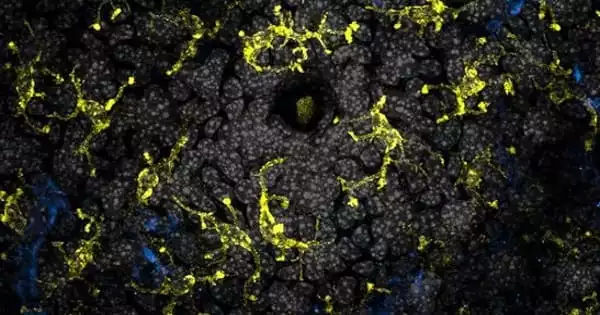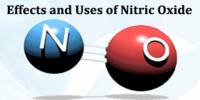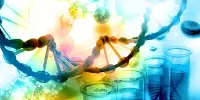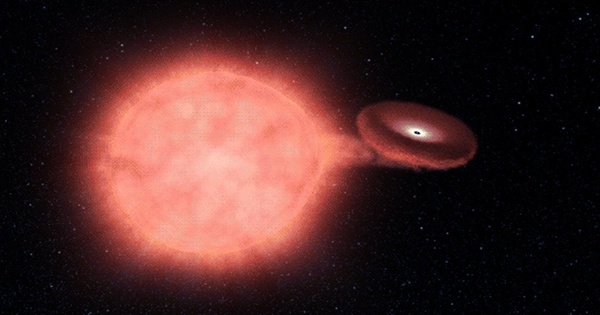About Chloroplast
Definition
Chloroplast is an organelle unique to plant cells that contains chlorophyll, which is what makes plants green and is responsible for enabling photosynthesis to occur, so that plants can convert sunlight into chemical energy. It is a type of organelle known as a plastid, characterized by its high concentration of chlorophyll. Other plastid types, such as the leucoplast and the chromoplast, contain little chlorophyll and do not carry out photosynthesis.
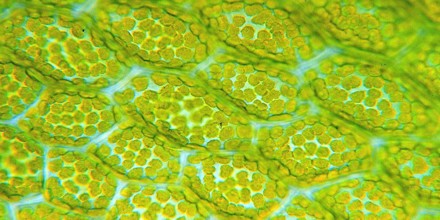
The first definitive description of a chloroplast was given by Hugo von Mohl in 1837 as discrete bodies within the green plant cell. In 1883, A. F. W. Schimper would name these bodies as “chloroplastids”. In 1884, Eduard Strasburger adopted the term “chloroplasts”.
Chloroplasts allow a plant to capture light energy from the sun and turn it into chemical energy. Chloroplasts accomplish this conversion because they contain chlorophyll, a bright green pigment that absorbs light energy and carries out a chain of chemical reactions. These chemical reactions result in the production of glucose, which the plant uses as food, either storing it or making cellulose to build its cell walls. Chlorophyll is stored in disk-shaped sacs or membranes called thylakoids. It is here that the light energy absorbed by the chlorophyll is directed and changed into chemical energy. This energy allows the plant to take in carbon dioxide, give off oxygen, and eventually produce the plant’s food.
Structure and Function of Chloroplasts
Chloroplasts can be found in the cells of the mesophyll in plant leaves. There are usually 30-40 per mesophyll cell. The chloroplast has an inner and outer membrane with an empty intermediate space in between. Inside the chloroplast are stacks of thylakoids, called grana, as well as stroma, the dense fluid inside of the chloroplast. These thylakoids contain the chlorophyll that is necessary for the plant to go through photosynthesis. The space the chlorophyll fills is called the thylakoid space.
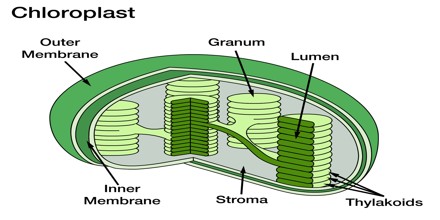
The chloroplasts are double membrane bound organelles and are the site of photosynthesis. It has a system of three membranes: the outer membrane, the inner membrane and the thylakoid system. The outer and the inner membrane of the chloroplast enclose a semi-gel-like fluid known as the stroma. This stroma makes up much of the volume of the chloroplast, the thylakoids system floats in the stroma.
Functions of Chloroplast:
- In plants all the cells participate in plant immune response as they lack specialized immune cells. The chloroplasts with the nucleus and cell membrane and ER are the key organelles of pathogen defense.
- The most important function of chloroplast is to make food by the process of photosynthesis. Food is prepared in the form of sugars. During the process of photosynthesis sugar and oxygen are made using light energy, water, and carbon dioxide.
- Light reaction takes place on the membranes of the thylakoids.
- Chloroplasts, like the mitochondria use the potential energy of the H+ ions or the hydrogen ion gradient to generate energy in the form of ATP.
- The dark reaction also known as the Calvin cycle takes place in the stroma of chloroplast.
- Production of NADPH2 molecules and oxygen as a result of photolysis of water.
- By the utilization of assimilatory powers the 6-carbon atom is broken into two molecules of phosphoglyceric acid.

Chloroplast Genome and Membrane Transport
The chloroplast genome typically is circular (though linear forms have also been observed) and is roughly 120–200 kilobases in length. The modern chloroplast genome, however, is much reduced in size: over the course of evolution, increasing numbers of chloroplast genes have been transferred to the genome in the cell nucleus. As a result, proteins encoded by nuclear DNA have become essential to chloroplast function. Hence, the outer membrane of the chloroplast, which is freely permeable to small molecules, also contains transmembrane channels for the import of larger molecules, including nuclear-encoded proteins. The inner membrane is more restrictive, with transport limited to certain proteins (e.g., nuclear-encoded proteins) that are targeted for passage through transmembrane channels.
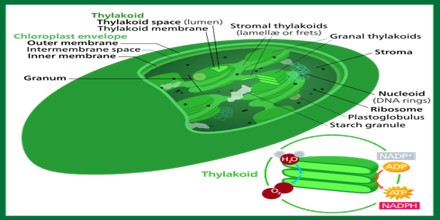
Role of Chloroplasts in Photosynthesis
The role of chloroplasts in photosynthesis is mainly to contain most of the reaction during photosynthesis. The plant will pump water into the leaves, and the leaves will also absorb carbon dioxide. All of the thylakoids, chlorophyll, water, carbon dioxide, etc. are available inside the chloroplast. The entire process of photosynthesis starts and completes inside of the chloroplast. The chloroplast essentially works as the ‘powerhouse’ for the cell, similar to the mitochondria, except that it creates its own food that then gets used to power the plant.

